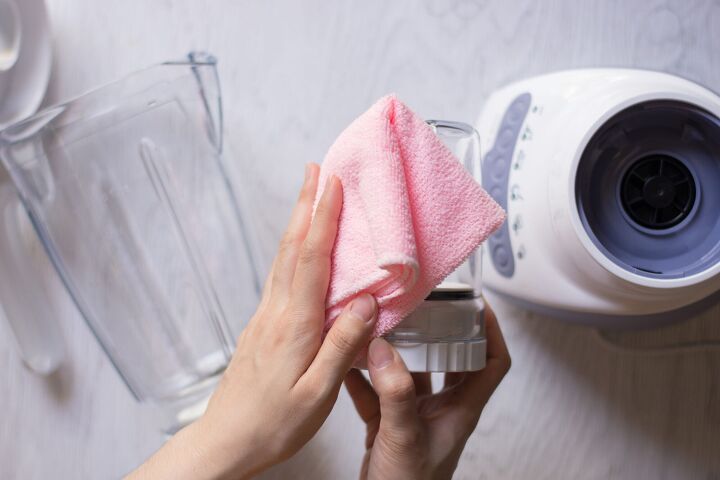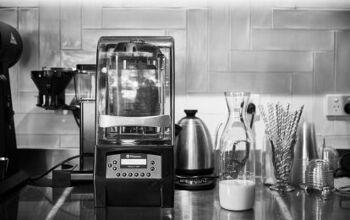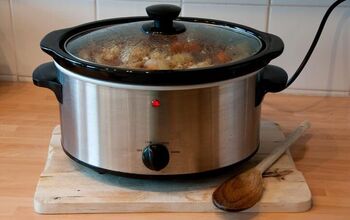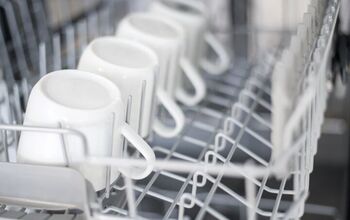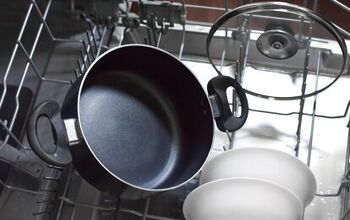Are Blenders Dishwasher Safe? (Find Out Now!)

One of the most unfortunate parts about cooking is the cleanup process after the fact. When it comes to cleaning your blender, for convenience sake, you may be wondering: “Are blenders dishwasher safe?” Of course, every brand of blender is different, which means that each manufacturer has specific guidelines when it comes to washing.
However, in short, you usually can put some components of a blender into the dishwasher. Generally speaking, the container that you blend the food in is dishwasher safe and depending on the specific model, the blades may also be dishwasher safe though this is not recommended because the dishwasher can cause the blades to dull over time. On the other hand, any parts that are connected to electricity, including the base, should never be put in the dishwasher.
Continue reading to learn more about how to properly clean and deep clean your blender, along with an explanation of what popular blender brands are considered to be dishwasher safe.
Do You Need a Maid Service?
Get free, zero-commitment quotes from pro contractors near you.

The Best Way to Clean a Blender
The good news is that the best way to clean a blender is immediately after use. The longer you leave the blender to sit after you’ve used it, the harder it’s going to be to clean. Follow these steps to effectively clean your blender:
- Once you’ve finished blending, pour warm water into your blender.
- Follow up with a couple of drops of dish soap.
- With the lid secure, put the container on the base and run the blender on a low setting for about 10 to 30 seconds.
- Dump out the contents of the blender and rinse the container thoroughly with hot water.
- Allow the blender to air dry completely upside down before using it again.
- The base of your blender should never be fully submerged in water. Rather, unplug the blender, and use a damp cloth to wipe the base clean.
Following these steps will make cleaning your blender after you’ve just prepared soups, smoothies, or salsas an absolute breeze. If desired, you can also use a scrubbing brush to clean the container and the blades with dish soap and warm water.
If you’re unable to clean your blender immediately after use, make sure that you at least fill it up with a solution of water and soap. This will prevent food from sticking in the time that it takes for you to return and wash it properly.
How to Deep Clean a Blender
Whether your blender has developed stubborn stains or the pitcher has become cloudy, the three basic steps below will help you give your blender a much-needed deep clean.
1. Start with a Clean Blender
You never want to start deep clean a blender that is full of blended food. Instead, make sure that you start by giving your blender a good rinse and, if possible, remove the blade assembly. For large blenders, pour in about four cups of cool water and four cups of vinegar. For smaller blenders, like the NutriBullet 24-ounce cup, only put about one-and-a-half cups of each.
2. Give Your Blender a Soak
Once you’ve put the vinegar and water mixture into the pitcher, let it sit for about four hours. You can also place the various components of the blender – such as the lids, tamper, blades, and seals – into a similar mixture to let them properly disinfect.
Then, run the blender for about 30 seconds before rinsing it out. For best results, repeat this process about once a month – or weekly, if you have hard water.
3. A Deeper Clean
If you still feel like your blender isn’t clean enough, you can pour a small amount of baking soda into the pitcher and scrub it with a scrub brush. Alternatively, try blending some lemon juice and vinegar, or scrubbing with lemon juice and vinegar. The acidity in both the lemon juice and vinegar is helpful for breaking down stains and odors. Regardless, always use special care when scrubbing the blades to avoid getting cut.
Note: If any of the components of your blender cannot be removed easily, it’s recommended that you don’t disassemble them to deep clean. Not only could this cause irreversible damage to your blender, you may also void your warranty.
Are Vitamix Blenders Dishwasher Safe?
According to Vitamix, only the S-series 20-ounce and 40-ounce containers are deemed “top-rack dishwasher safe.” Whereas, the S30 containers, lids, seals, tamper, and blade base are also top-rack dishwasher safe. If you do not own this specific Vitamix model, your blender should never go in the dishwasher.
Is the Ninja Professional Blender Dishwasher Safe?
In addition to being incredibly versatile and budget-friendly, the Ninja Professional Blender’s containers, blade assemblies, and lids are all top-rack dishwasher safe. However, when it comes to removing the blade assemblies, this should be done with care, as they are incredibly sharp and can easily cut you.
Is the NutriBullet Blender Dishwasher Safe?
The NutriBullet Blender is ideal for those who desire a single-serve blender and are limited on counter space. When it comes to cleanup, NutriBullet cups, lids, blades, and lip rings are all top-rack dishwasher safe.
To ensure that no food particles are left behind, always rinse the various components before you toss them in the dishwasher. Also, never use the sanitize cycle on your dishwasher, as the excessive heat can warp the plastic. Like all other blenders, never submerge the NutriBullet base in water. Unplug it and hand wipe with a damp sponge or cloth.
Do You Need a Maid Service?
Get free, zero-commitment quotes from pro contractors near you.

Putting Blenders in the Dishwasher
We understand the desire to place your blender parts in the dishwasher, as nothing is more convenient when it comes to cleaning up the kitchen. Although hand washing only will prolong the life of your blender’s parts, if the components of your particular blender are considered dishwasher safe, we recommend only placing them on the top rack of the dishwasher.
The bottom rack is much closer to the heating element, and should be reserved for bowls, plates, and cutlery. Placing your dishwasher-safe items on the top rack of the dishwasher instead of the bottom, will greatly prolong their life.
Related Guides

Jessica considers herself a home improvement and design enthusiast. She grew up surrounded by constant home improvement projects and owes most of what she knows to helping her dad renovate her childhood home. Being a Los Angeles resident, Jessica spends a lot of her time looking for her next DIY project and sharing her love for home design.
More by Jessica Stone



